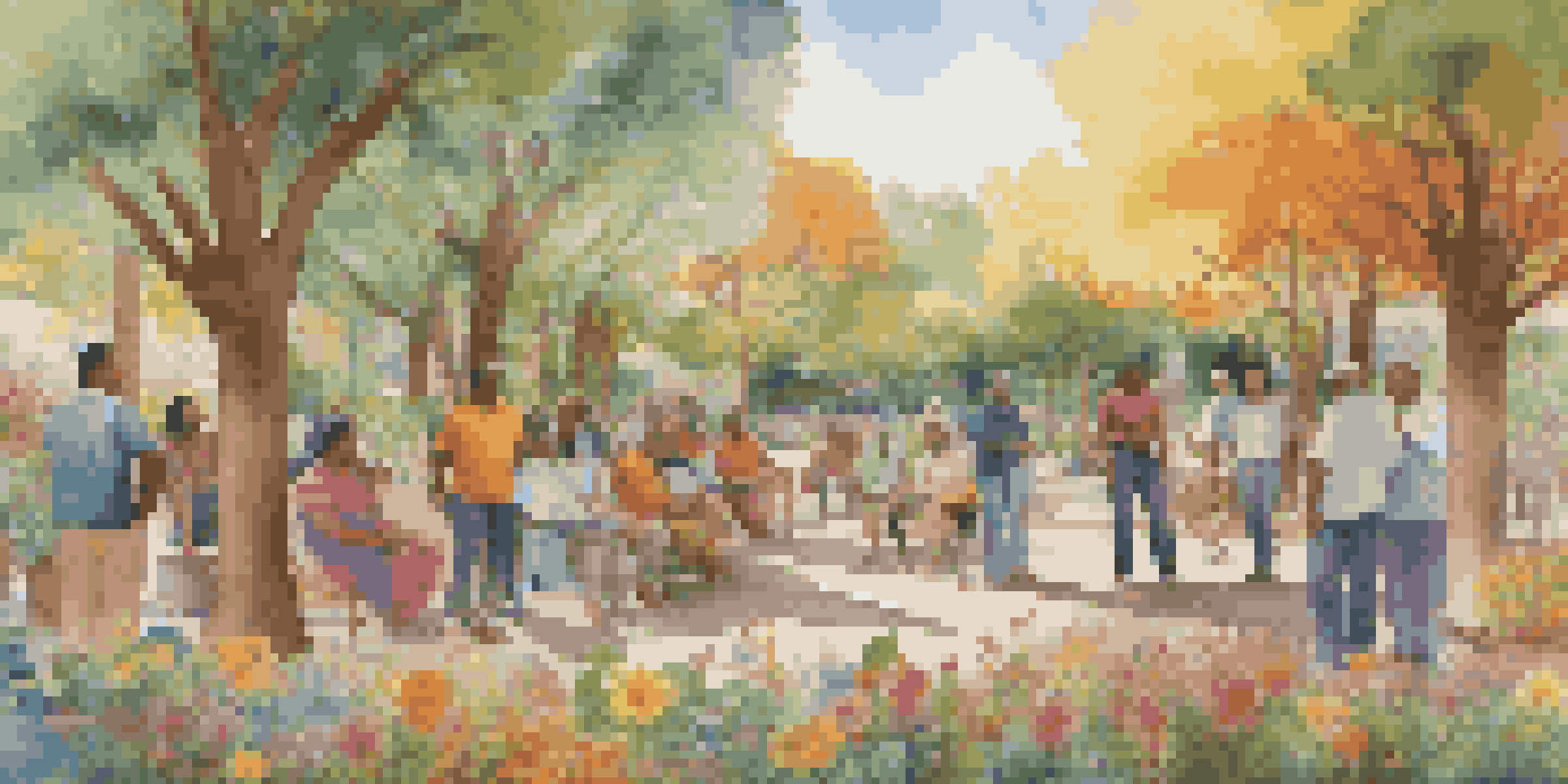Art as Civic Dialogue: Fostering Conversation and Belonging

Understanding Civic Dialogue and Its Importance
Civic dialogue refers to conversations that engage community members in discussing shared concerns and values. It plays a crucial role in fostering a sense of belonging and connection among people from diverse backgrounds. By facilitating these discussions, communities can address pressing issues collectively, making everyone feel heard and valued.
The Role of Art in Community Conversations
Art serves as a universal language that can bridge gaps between individuals. Whether through visual arts, music, or performance, creative expressions can provoke thought and inspire dialogue. By presenting different perspectives, art encourages participants to reflect on their own views while also considering the experiences of others.
Civic Dialogue Fosters Community Bonds
Engaging in civic dialogue allows diverse community members to discuss shared concerns, fostering connection and a sense of belonging.
Creating Safe Spaces for Expression
For meaningful dialogue to occur, it’s essential to create safe spaces where individuals feel comfortable expressing their thoughts. Community art projects, workshops, or public installations can provide these environments, allowing people to share their stories without fear of judgment. Such spaces promote trust and openness, which are vital for authentic conversations.
Examples of Art as Civic Dialogue in Action
Many cities have successfully utilized art to spark civic dialogue. For instance, mural projects involving community members can address local issues while beautifying neighborhoods. These collaborative efforts not only create stunning visuals but also encourage participants to discuss the themes represented, fostering a deeper understanding of community needs.
Art Inspires Reflection and Dialogue
Art serves as a universal language that prompts individuals to reflect on their perspectives while considering the experiences of others.
The Impact of Collaborative Art Projects
Collaborative art projects can significantly enhance community engagement and dialogue. When individuals work together to create something meaningful, they forge connections and build relationships. This collaboration often leads to a greater sense of ownership and pride in the community, as participants see the direct impact of their efforts.
Art as a Tool for Advocacy and Change
Art can also serve as a powerful tool for advocacy, raising awareness about social issues and inspiring action. Artists often use their platforms to highlight injustices, prompting critical conversations that can lead to change. By engaging the public through compelling visuals or performances, art encourages people to reflect on societal challenges and consider their role in addressing them.
Collaboration Enhances Community Pride
Collaborative art projects encourage participation and ownership, leading to stronger relationships and a deeper understanding of community needs.
Building Lasting Connections Through Art
Engaging in art can help build lasting connections between community members. Through shared experiences in creative processes, individuals can develop friendships and networks that extend beyond the art itself. These connections can lead to ongoing dialogue and collaborative efforts that continue to enrich the community.
Conclusion: The Future of Art in Civic Dialogue
As we move forward, it is essential to recognize the potential of art as a catalyst for civic dialogue. By fostering an environment where creativity and conversation can thrive, communities can cultivate a sense of belonging and collaboration. Embracing art in civic engagement not only enhances individual experiences but also strengthens the fabric of society as a whole.